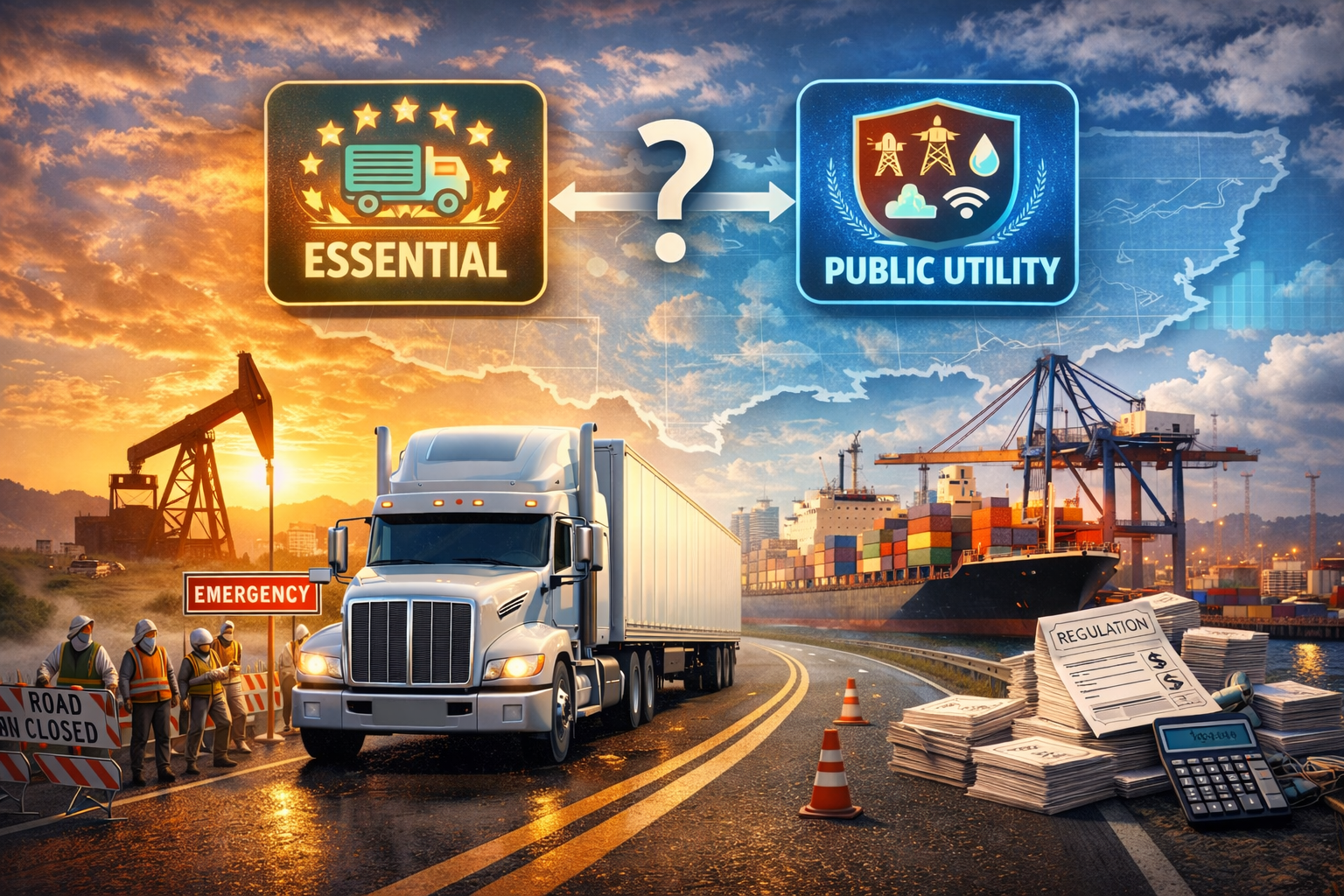Fuel Excise Tax Explained for Trucking Companies
Share this Article:
What Is Fuel Excise Tax?
Fuel excise tax is a tax imposed on the sale of fuel, typically collected at the point of manufacture or distribution. It is designed to fund transportation infrastructure such as highways and bridges. Unlike sales tax, which is based on the value of the product, excise tax is usually assessed per gallon of fuel sold.
For businesses that consume large amounts of fuel, like trucking companies, fuel excise tax represents a significant operating cost. This tax applies primarily to gasoline and diesel fuels and is structured to generate revenue for both federal and state governments.
Understanding how fuel excise tax works is essential for managing transportation costs and ensuring compliance with applicable tax laws.
Fuel Excise Tax in the Trucking Industry
Fuel excise tax is a significant factor in the trucking industry’s operating costs. Trucking companies consume large volumes of diesel and gasoline, making these taxes a substantial line item. While the tax is typically included in the price at the pump, companies remain responsible for accurate reporting and compliance.
Many trucking companies operate under the International Fuel Tax Agreement (IFTA), which streamlines the reporting process across multiple jurisdictions. IFTA requires carriers to file quarterly reports, detailing miles traveled and fuel purchased in each state or province. Tax liability is then allocated based on where the fuel was used rather than where it was purchased.
Accurate reporting is critical. Mistakes can result in penalties, interest charges, and increased audit risk. With fuel prices fluctuating, careful management of fuel excise tax obligations can directly impact a company’s cost control efforts.
Federal vs. State Fuel Excise Taxes
Trucking companies face fuel tax obligations at two levels: federal and state. The federal government applies a consistent per-gallon tax on diesel and gasoline, primarily supporting the Highway Trust Fund for national infrastructure projects. This rate is fixed nationwide and does not fluctuate by state.
In contrast, each state sets its own fuel tax rates and policies. Some states impose additional fees or surcharges, while others tie their rates to inflation or fuel prices. These differences mean that the total tax burden can vary significantly depending on where fuel is purchased and consumed.
Federal fuel taxes are generally more predictable, but state-level variations add complexity to tax planning and reporting. Trucking companies must closely track fuel usage by state to calculate their liabilities accurately and avoid compliance issues across jurisdictions.
Fuel Excise Tax Reporting and Compliance
Accurate reporting is essential for managing fuel excise tax obligations. Trucking companies must track fuel purchases, miles traveled, and fuel usage by jurisdiction. Most carriers report through IFTA, which simplifies filings across member states and provinces.
Under IFTA, quarterly returns calculate tax based on where fuel is used rather than where it is bought. Consistent tracking of receipts and mileage ensures filings are supported by proper documentation.
Organized records are key during audits. Missing or incomplete data can trigger fines and adjustments. Companies benefit from real-time data collection and regular review of their reporting processes to maintain compliance and minimize risk.
Strategies to Minimize Fuel Excise Tax Liability
Minimizing fuel excise tax liability begins with smart operational practices. Route planning plays a major role, as optimizing fuel purchases in states with lower tax rates can reduce overall costs. Monitoring routes and fuel stops strategically helps manage the tax burden.
Maintaining accurate IFTA records also reduces liability. Errors in reporting can lead to overpayments or missed refund opportunities. Regular internal audits allow companies to identify discrepancies and correct them before filing deadlines.
Some companies explore fuel tax recovery programs to reclaim overpaid taxes, especially for off-road usage that may qualify for refunds. Working with vendors who understand transportation tax rules can also lead to better invoicing practices and avoid unnecessary tax charges.
Applying these strategies requires attention to detail and an understanding of state-specific rules. Over time, small adjustments can lead to significant savings on fuel-related expenses.
Multistate Operations: Special Considerations
Operating across multiple states adds complexity to fuel excise tax compliance. Each jurisdiction has its own tax rates, reporting requirements, and exemption rules, which can create challenges for companies with broad regional or national footprints.
IFTA simplifies some of the administrative burden, but companies must still maintain precise records of miles traveled and fuel consumed in each state. Misreporting even small amounts can lead to discrepancies and potential penalties during audits.
States may also impose additional local taxes or surcharges beyond standard fuel excise rates. Companies must stay informed about these variations to avoid unexpected liabilities.
Careful planning and consistent recordkeeping are critical for managing the demands of multistate operations. Leveraging technology solutions or working with industry-specific advisors can improve accuracy and reduce the risks associated with fuel tax reporting across multiple jurisdictions.
How Transportation Tax Consulting Can Help
Transportation Tax Consulting offers solutions crafted for the unique challenges of fuel excise tax in the trucking industry. Our advisors bring deep expertise to assist with precise reporting, identify refund opportunities, and manage compliance across diverse jurisdictions.
We support clients with IFTA return preparation, audit defense, and forward-looking tax planning. By addressing transportation-specific requirements, we develop strategies that limit risk and promote better financial outcomes.
Managing fuel excise tax obligations requires specialized insight. Transportation Tax Consulting is dedicated to making a difference by delivering tailored guidance that drives stability and reduces unnecessary costs.
Schedule a consultation today to explore how we can strengthen your fuel excise tax approach.
Share with Us:




